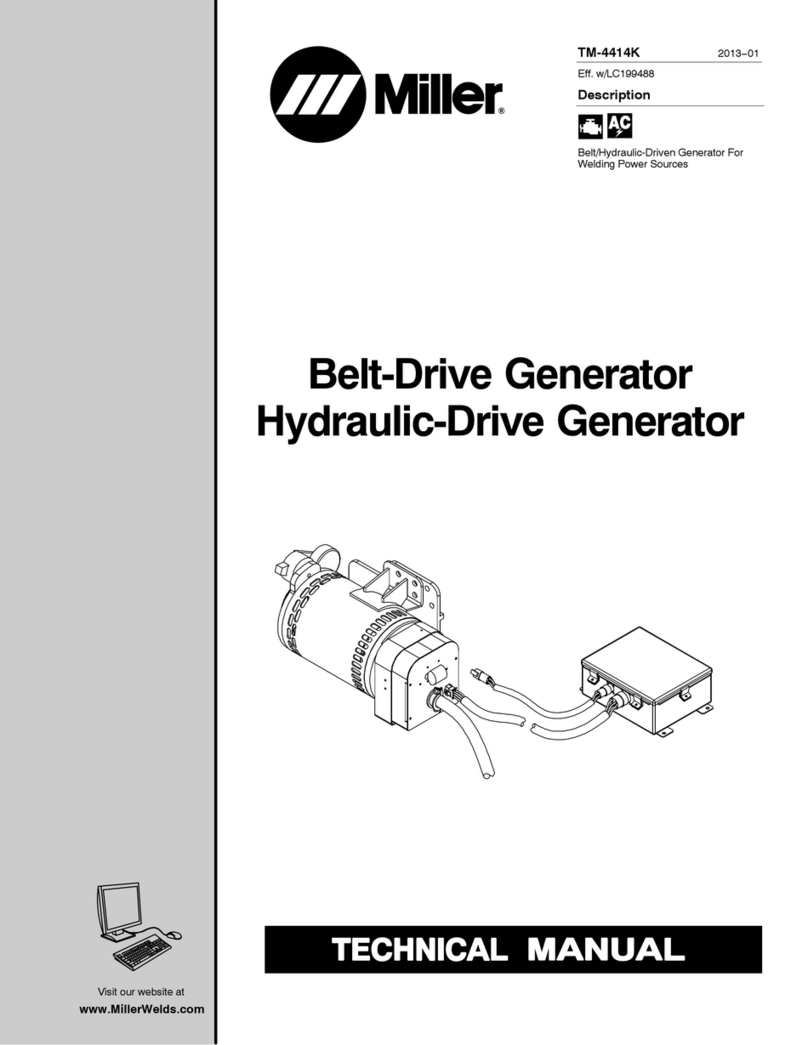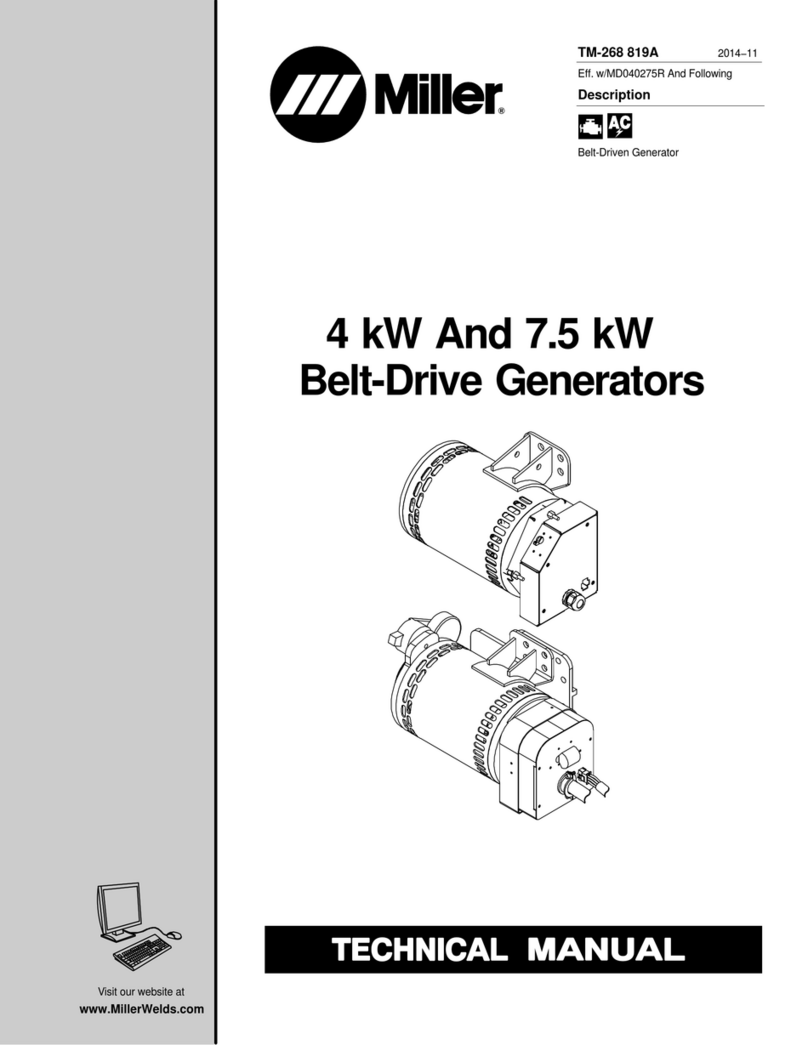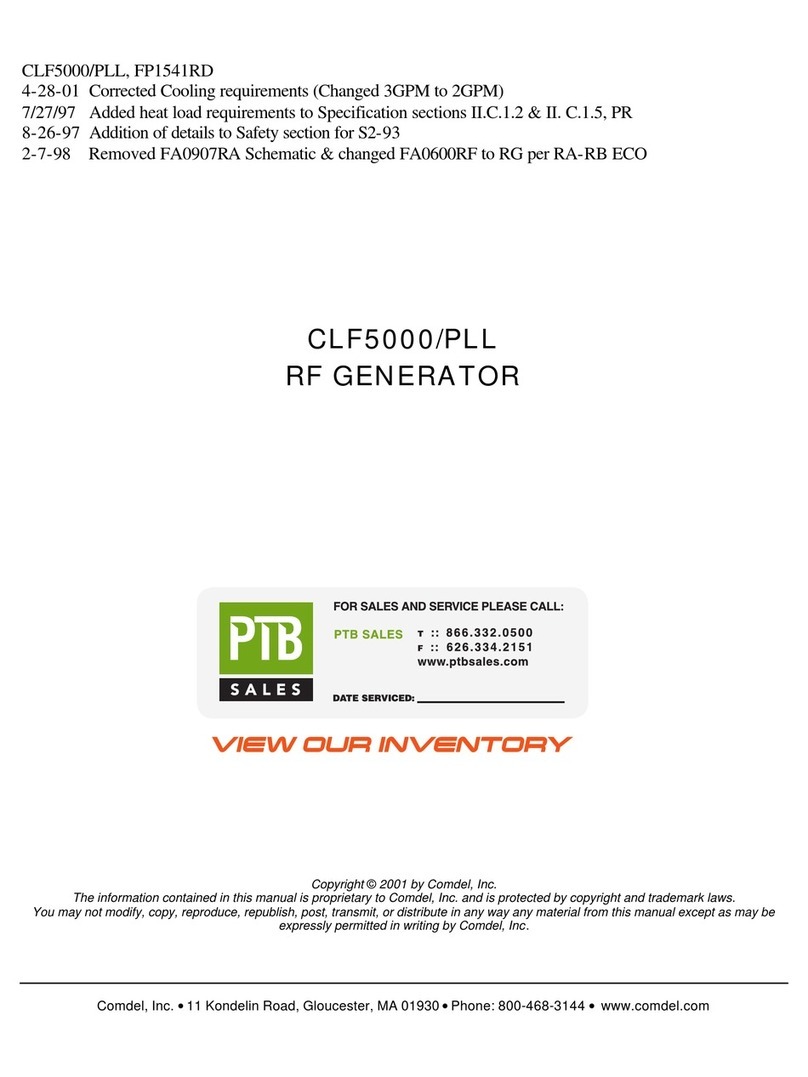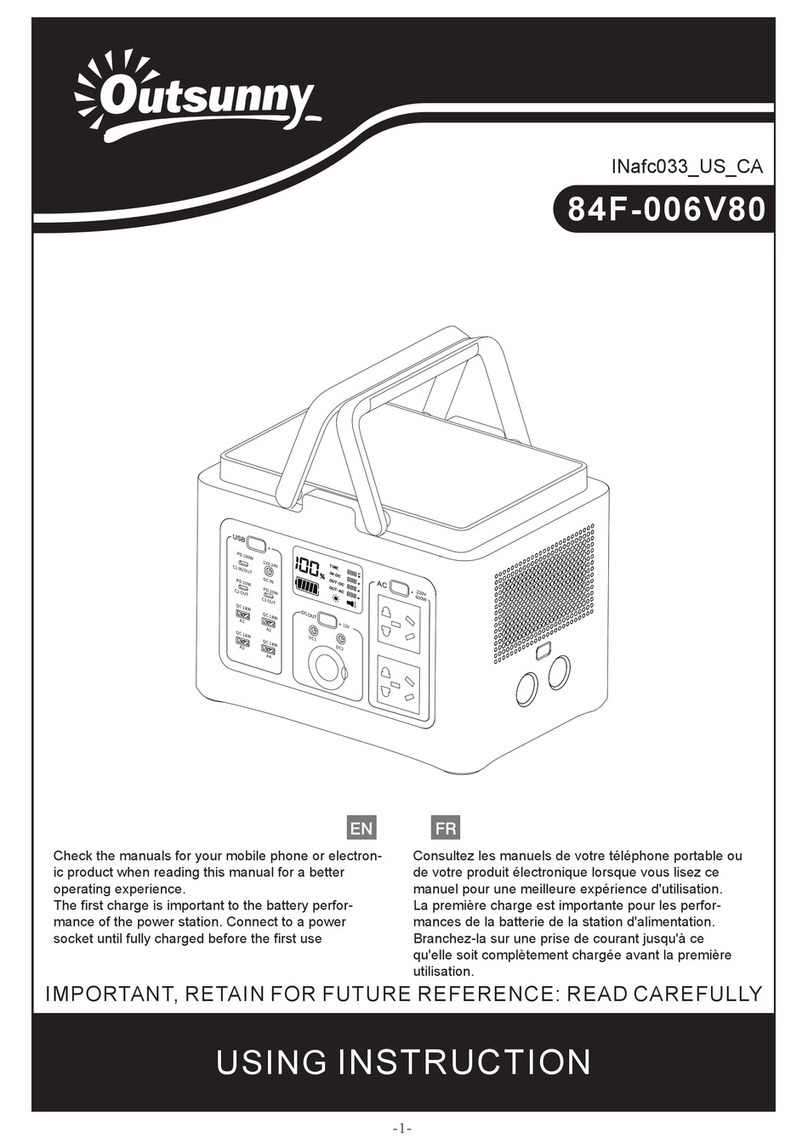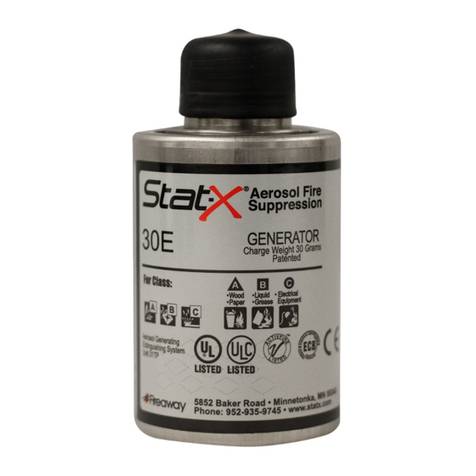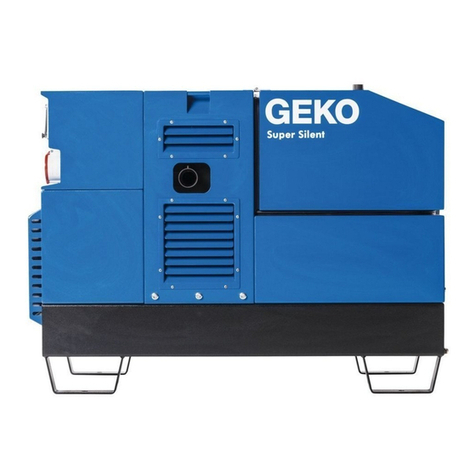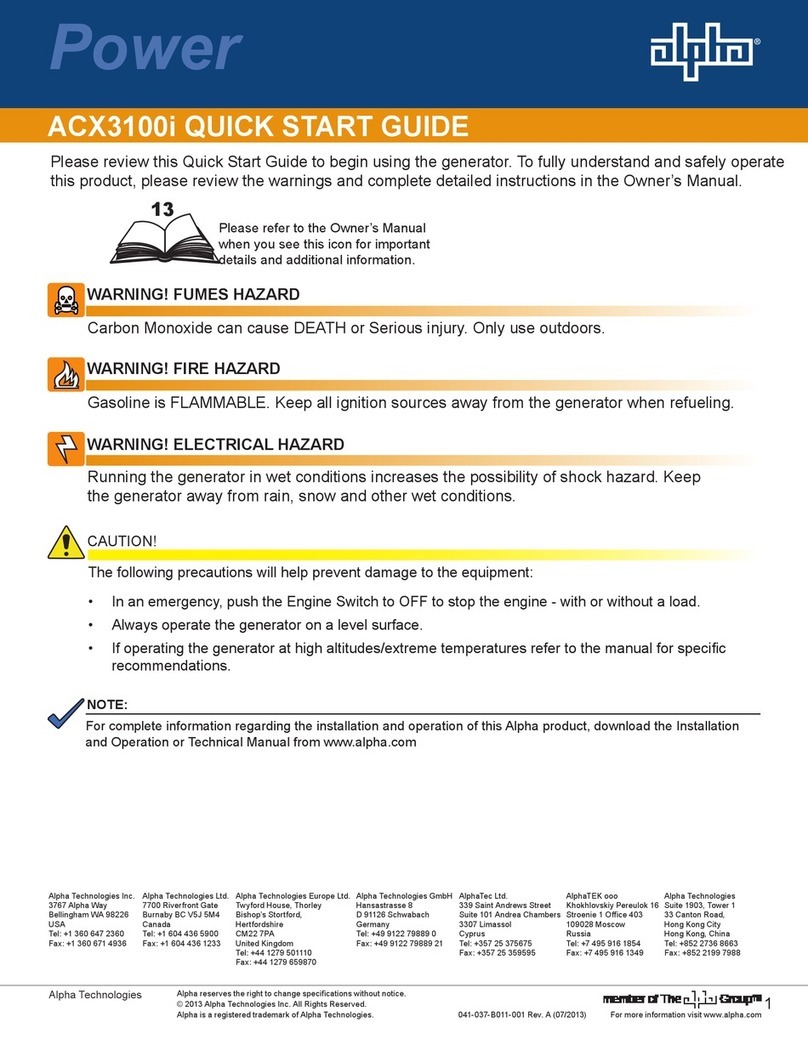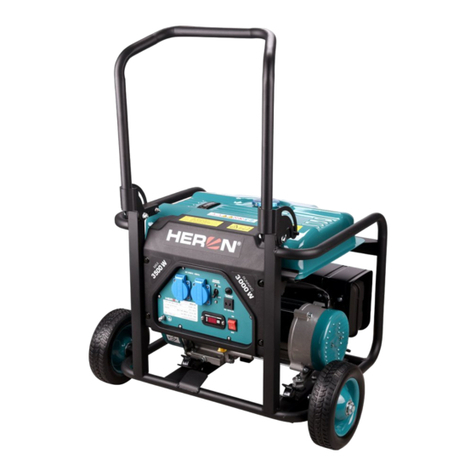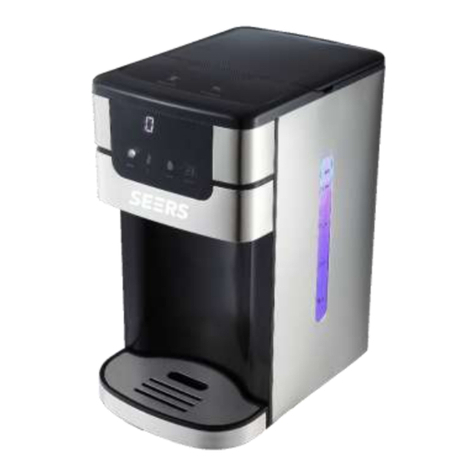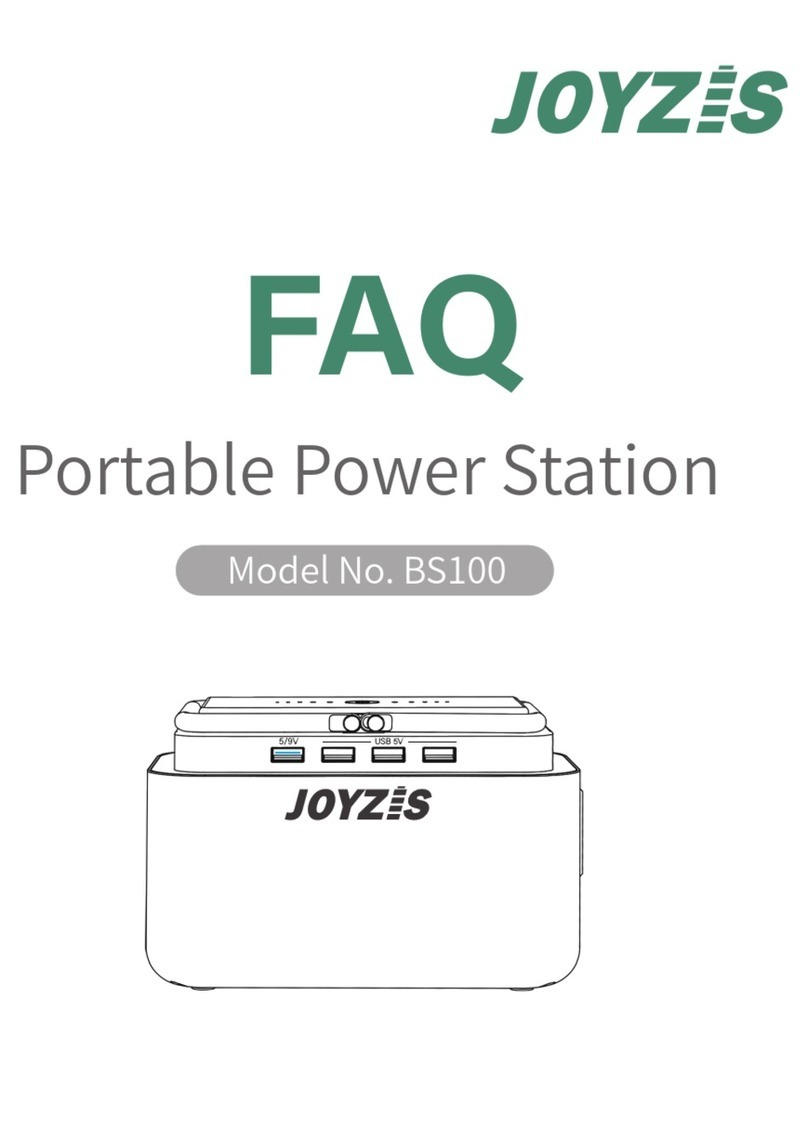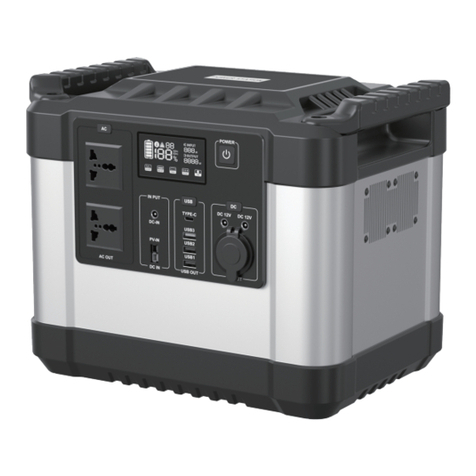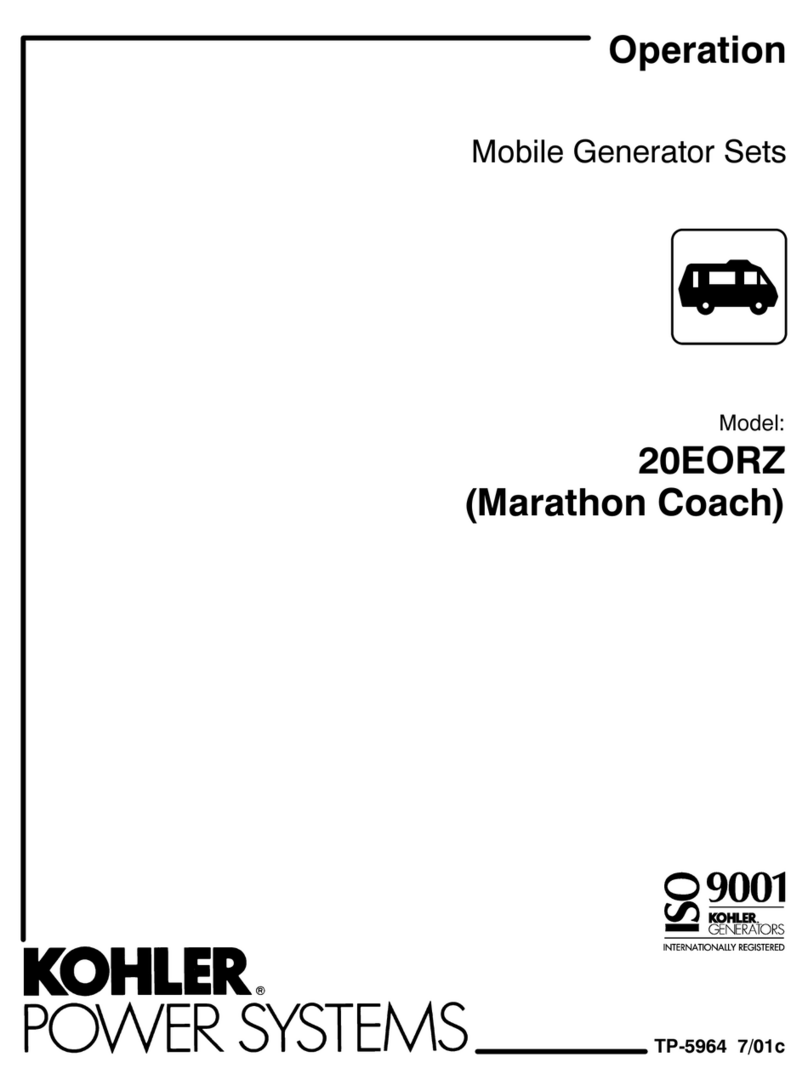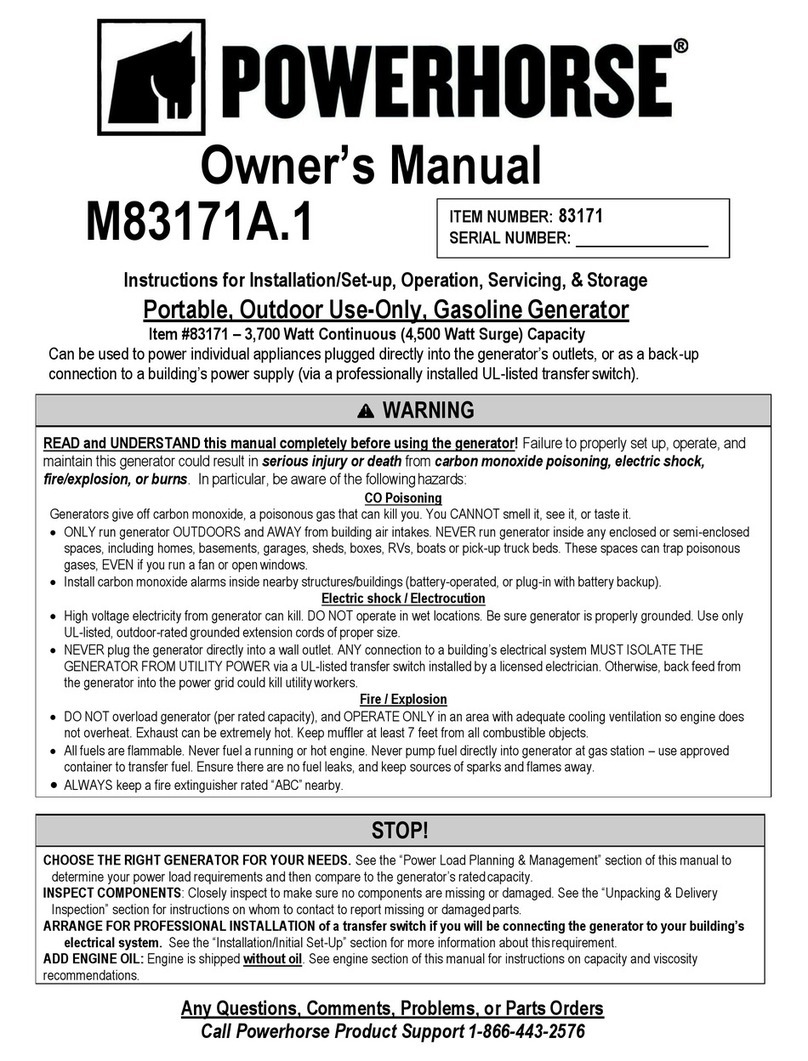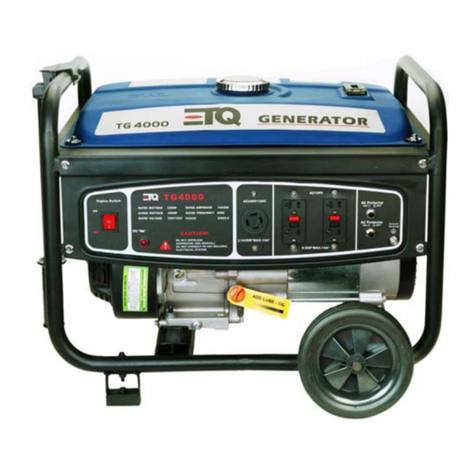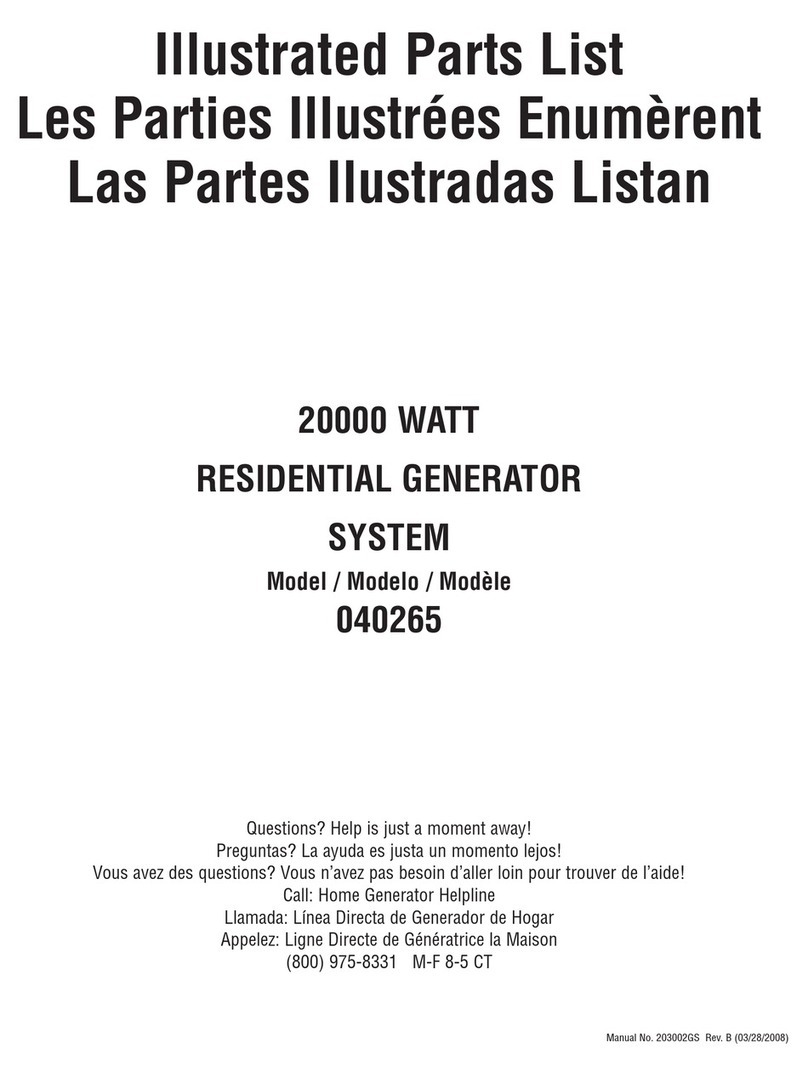Miller Big Blue 500X Eco Pro User manual

Processes
OM-242 702P
2012−04
Big Blue 500X Eco Pro
Processes
Description
TIG (GTAW) Welding
Stick (SMAW) Welding
Flux Cored (FCAW) Welding
Engine Driven Welding Generator
Visit our website at
www.MillerWelds.com
File: Engine Drive
Air Carbon Arc (CAC-A)
Cutting and Gouging

Miller Electric manufactures a full line
of welders and welding related equipment.
For information on other quality Miller
products, contact your local Miller distributor to receive the latest full
line catalog or individual specification sheets. To locate your nearest
distributor or service agency call 1-800-4-A-Miller, or visit us at
www.MillerWelds.com on the web.
Thank you and congratulations on choosing Miller. Now you can get
the job done and get it done right. We know you don’t have time to do
it any other way.
That’s why when Niels Miller first started building arc welders in 1929,
he made sure his products offered long-lasting value and superior
quality. Like you, his customers couldn’t afford anything less. Miller
products had to be more than the best they could be. They had to be the
best you could buy.
Today, the people that build and sell Miller products continue the
tradition. They’re just as committed to providing equipment and service
that meets the high standards of quality and value established in 1929.
This Owner’s Manual is designed to help you get the most out of your
Miller products. Please take time to read the Safety precautions. They
will help you protect yourself against potential hazards on the worksite.
We’ve made installation and operation quick
and easy. With Miller you can count on years
of reliable service with proper maintenance.
And if for some reason the unit needs repair,
there’s a Troubleshooting section that will
help you figure out what the problem is. The
parts list will then help you to decide the
exact part you may need to fix the problem.
Warranty and service information for your
particular model are also provided.
Miller is the first welding
equipment manufacturer in
the U.S.A. to be registered to
the ISO 9001 Quality System
Standard.
Working as hard as you do
−every power source from
Miller is backed by the most
hassle-free warranty in the
business.
From Miller to You
Mil_Thank 2009−09

TABLE OF CONTENTS
SECTION 1 −SAFETY PRECAUTIONS −READ BEFORE USING 1................................
1-1. Symbol Usage 1.......................................................................
1-2. Arc Welding Hazards 1.................................................................
1-3. Engine Hazards 3.....................................................................
1-4. Compressed Air Hazards 3..............................................................
1-5. Additional Symbols For Installation, Operation, And Maintenance 4............................
1-6. California Proposition 65 Warnings 6......................................................
1-7. Principal Safety Standards 6............................................................
1-8. EMF Information 6.....................................................................
SECTION 2 −CONSIGNES DE SÉCURITÉ −LIRE AVANT UTILISATION 7..........................
2-1. Signification des symboles 7............................................................
2-2. Dangers relatifs au soudage à l’arc 7.....................................................
2-3. Dangers existant en relation avec le moteur 9..............................................
2-4. Dangers liés à l’air comprimé 10..........................................................
2-5. Dangers supplémentaires en relation avec l’installation, le fonctionnement et la maintenance 11.....
2-6. Proposition californienne 65 Avertissements 13..............................................
2-7. Principales normes de sécurité 13.........................................................
2-8. Informations relatives aux CEM 13........................................................
SECTION 3 −DEFINITIONS 14.................................................................
3-1. Wordless Label Definitions 14............................................................
3-2. Warning Label Definitions 15.............................................................
3-3. Symbols And Definitions 16..............................................................
SECTION 4 −SPECIFICATIONS 17..............................................................
4-1. Weld, Power, And Engine Specifications 17.................................................
4-2. Dimensions, Weights, And Operating Angles 17.............................................
4-3. CC Volt-Ampere Curves 18...............................................................
4-4. CV (FCAW) Volt-Ampere Curves 19.......................................................
4-5. Fuel Consumption 19....................................................................
4-6. Duty Cycle And Overheating 20...........................................................
4-7. AC Generator Power Curve 20............................................................
SECTION 5 −INSTALLATION 21................................................................
5-1. Serial Number And Rating Label Locations 21...............................................
5-2. Installing Welding Generator 21...........................................................
5-3. Mounting Welding Generator 22...........................................................
5-4. Grounding Generator To Truck Or Trailer Frame 23..........................................
5-5. Installing Exhaust Pipe 23................................................................
5-6. Connecting The Battery 24...............................................................
5-7. Engine Prestart Checks 25...............................................................
5-8. Weld Output Terminals 26................................................................
5-9. Connecting To Weld Output Terminals 26...................................................
5-10. Selecting Weld Cable Sizes* 27...........................................................
5-11. Connecting To Remote 14 Receptacle RC14 28.............................................
SECTION 6 −OPERATING WELDING GENERATOR 30............................................
6-1. Front Panel Controls (See Section 6-2) 30..................................................
6-2. Description Of Front Panel Controls (See Section 6-1) 31.....................................
6-3. Remote Voltage/Amperage Control 32.....................................................
6-4. Operating Optional Engine Block Heater 33.................................................
6-5. Fuel/Hour Gauge Descriptions 34.........................................................
SECTION 7 −OPERATING AUXILIARY EQUIPMENT 35...........................................
7-1. Auxiliary Power Receptacles 35...........................................................
7-2. GFCI Receptacle Information, Resetting And Testing 36.......................................

TABLE OF CONTENTS
SECTION 8 −MAINTENANCE & TROUBLESHOOTING 37.........................................
8-1. Maintenance Label 37...................................................................
8-2. Routine Maintenance 38.................................................................
8-3. Servicing Air Cleaner 39.................................................................
8-4. Checking Generator Brushes 39..........................................................
8-5. Inspecting And Cleaning Spark Arrestor Muffler 40...........................................
8-6. Servicing Engine Cooling System 40.......................................................
8-7. Servicing Fuel And Lubrication Systems 41.................................................
8-8. Overload Protection 42..................................................................
8-9. Adjusting Engine Speed 43...............................................................
8-10. Voltmeter/Ammeter Help Displays (Models With Optional Meters) 43............................
8-11. Troubleshooting 44.....................................................................
SECTION 9 −ELECTRICAL DIAGRAMS 48......................................................
SECTION 10 −RUN-IN PROCEDURE 50.........................................................
10-1. Wetstacking 50.........................................................................
10-2. Run-In Procedure Using Load Bank 51.....................................................
10-3. Run-In Procedure Using Resistance Grid 52................................................
SECTION 11 −GENERATOR POWER GUIDELINES 53............................................
SECTION 12 −PARTS LIST 60.................................................................
WARRANTY

OM-242 702 Page 1
SECTION 1 −SAFETY PRECAUTIONS −READ BEFORE USING
rom_2011−10
Protect yourself and others from injury — read, follow, and save these important safety precautions and operating instructions.
1-1. Symbol Usage
DANGER! −Indicates a hazardous situation which, if
not avoided, will result in death or serious injury. The
possible hazards are shown in the adjoining symbols
or explained in the text.
Indicates a hazardous situation which, if not avoided,
could result in death or serious injury. The possible
hazards are shown in the adjoining symbols or ex-
plained in the text.
NOTICE −Indicates statements not related to personal injury.
Indicates special instructions.
This group of symbols means Warning! Watch Out! ELECTRIC
SHOCK, MOVING PARTS, and HOT PARTS hazards. Consult sym-
bols and related instructions below for necessary actions to avoid the
hazards.
1-2. Arc Welding Hazards
The symbols shown below are used throughout this manual
to call attention to and identify possible hazards. When you
see the symbol, watch out, and follow the related instructions
to avoid the hazard. The safety information given below is
only a summary of the more complete safety information
found in the Safety Standards listed in Section 1-7. Read and
follow all Safety Standards.
Only qualified persons should install, operate, maintain, and
repair this unit.
During operation, keep everybody, especially children, away.
Touching live electrical parts can cause fatal shocks or
severe burns. The electrode and work circuit is
electrically live whenever the output is on. The input
power circuit and machine internal circuits are also live
when power is on. In semiautomatic or automatic wire
welding, the wire, wire reel, drive roll housing, and all
metal parts touching the welding wire are electrically
live. Incorrectly installed or improperly grounded
equipmentis a hazard.
ELECTRIC SHOCK can kill.
Do not touch live electrical parts.
Wear dry, hole-free insulating gloves and body protection.
Insulate yourself from work and ground using dry insulating mats
or covers big enough to prevent any physical contact with the work
or ground.
Do not use AC output in damp areas, if movement is confined, or if
there is a danger of falling.
Use AC output ONLY if required for the welding process.
If AC output is required, use remote output control if present on
unit.
Additionalsafety precautions are required when any of the follow-
ing electrically hazardous conditions are present: in damp
locations or while wearing wet clothing; on metal structures such
as floors, gratings, or scaffolds; when in cramped positions such
as sitting, kneeling, or lying; or when there is a high risk of unavoid-
able or accidental contact with the workpiece or ground. For these
conditions, use the following equipment in order presented: 1) a
semiautomaticDC constant voltage (wire) welder, 2) a DC manual
(stick) welder, or 3) an AC welder with reduced open-circuit volt-
age. In most situations, use of a DC, constant voltage wire welder
is recommended. And, do not work alone!
Disconnect input power or stop engine before installing or
servicing this equipment. Lockout/tagout input power according to
OSHA 29 CFR 1910.147 (see Safety Standards).
Properly install, ground, and operate this equipment according to
its Owner’s Manual and national, state, and local codes.
Always verify the supply ground — check and be sure that input
power cord ground wire is properly connected to ground terminal in
disconnect box or that cord plug is connected to a properly
grounded receptacle outlet.
When making input connections, attach proper grounding conduc-
tor first −double-check connections.
Keep cords dry, free of oil and grease, and protected from hot metal
and sparks.
Frequently inspect input power cord for damage or bare wiring —
replace cord immediately if damaged — bare wiring can kill.
Turn off all equipment when not in use.
Do not use worn, damaged, undersized, or poorly spliced cables.
Do not drape cables over your body.
If earth grounding of the workpiece is required, ground it directly
with a separate cable.
Do not touch electrode if you are in contact with the work, ground,
or another electrode from a different machine.
Use only well-maintained equipment. Repair or replace damaged
parts at once. Maintain unit according to manual.
Do not touch electrode holders connected to two welding ma-
chines at the same time since double open-circuit voltage will be
present.
Wear a safety harness if working above floor level.
Keep all panels and covers securely in place.
Clamp work cable with good metal-to-metal contact to workpiece
or worktable as near the weld as practical.
Insulate work clamp when not connected to workpiece to prevent
contact with any metal object.
Do not connect more than one electrode or work cable to any
single weld output terminal. Disconnect cable for process not in
use.
SIGNIFICANT DC VOLTAGE exists in inverter power
sources AFTER stopping engine.
Stop engine on inverter and discharge input capacitors according
to instructions in Maintenance Section before touching any parts.
HOT PARTS can burn.
Do not touch hot parts bare handed.
Allow cooling period before working on equip-
ment.
To handle hot parts, use proper tools and/or wear heavy, insu-
lated welding gloves and clothing to prevent burns.
FLYING METAL or DIRT can injure eyes.
Welding, chipping, wire brushing, and grinding
cause sparks and flying metal. As welds cool,
they can throw off slag.
Wear approved safety glasses with side shields even under your
welding helmet.
Table of contents
Other Miller Portable Generator manuals
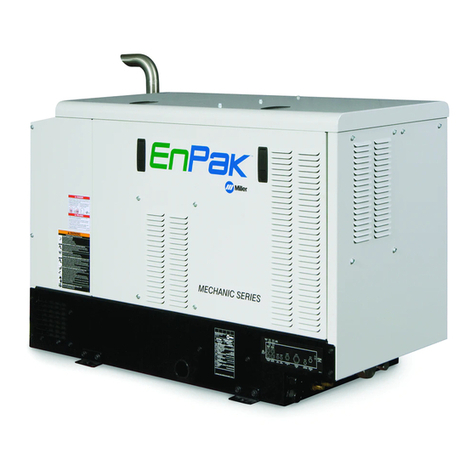
Miller
Miller ENPAK User manual
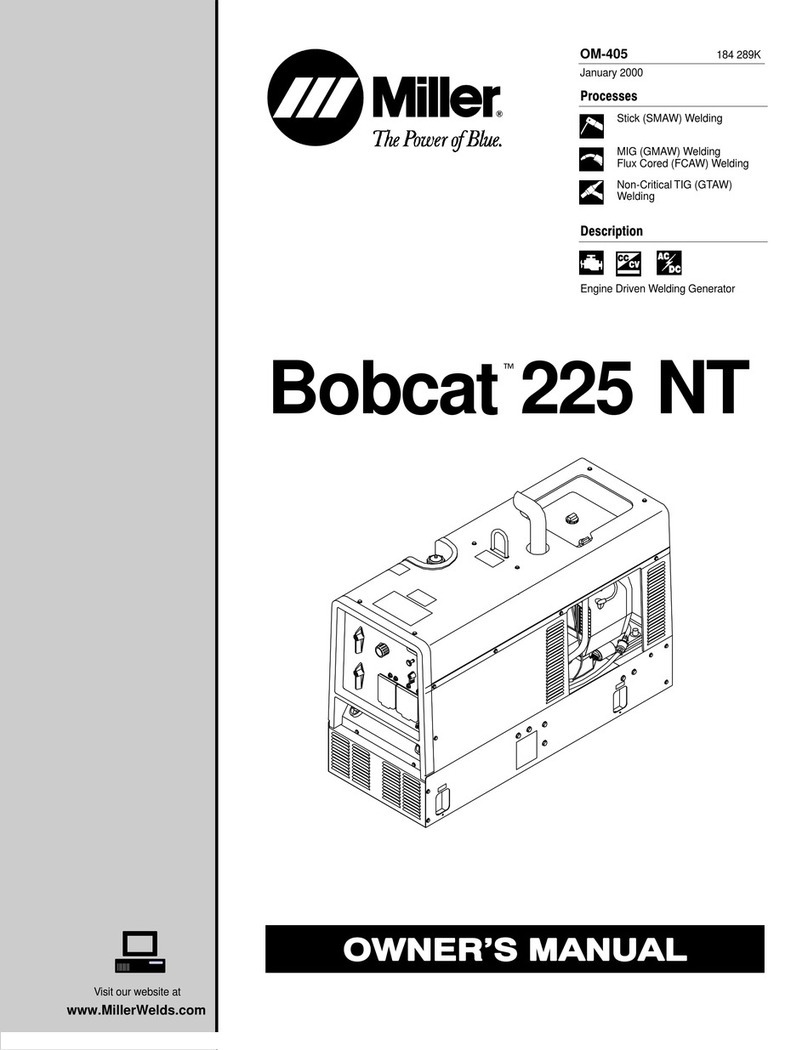
Miller
Miller Bobcat 225 NT User manual
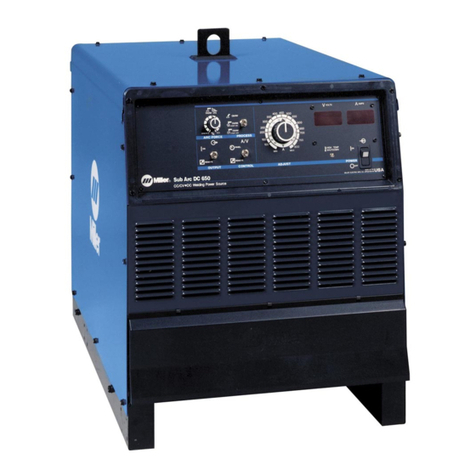
Miller
Miller Subarc DC 650 User manual

Miller
Miller Fusion 160 User manual

Miller
Miller Metro 300DXQ User manual
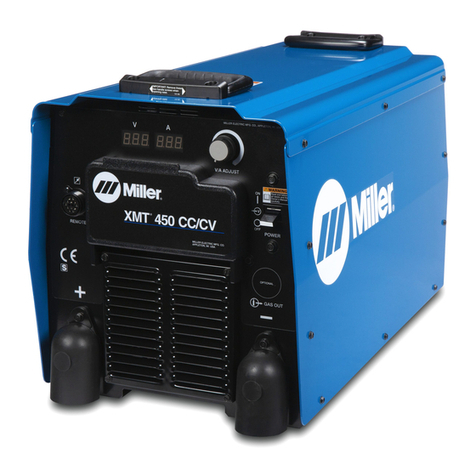
Miller
Miller XMT 450 CC/CV User manual

Miller
Miller Blue Star 145DX User manual
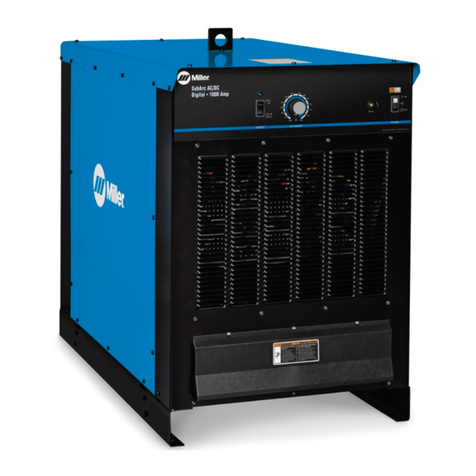
Miller
Miller SubArc AC/DC Digital 1000 Amp User manual

Miller
Miller Blue Star 185 User manual

Miller
Miller Big Blue 300 PRO Series User manual

